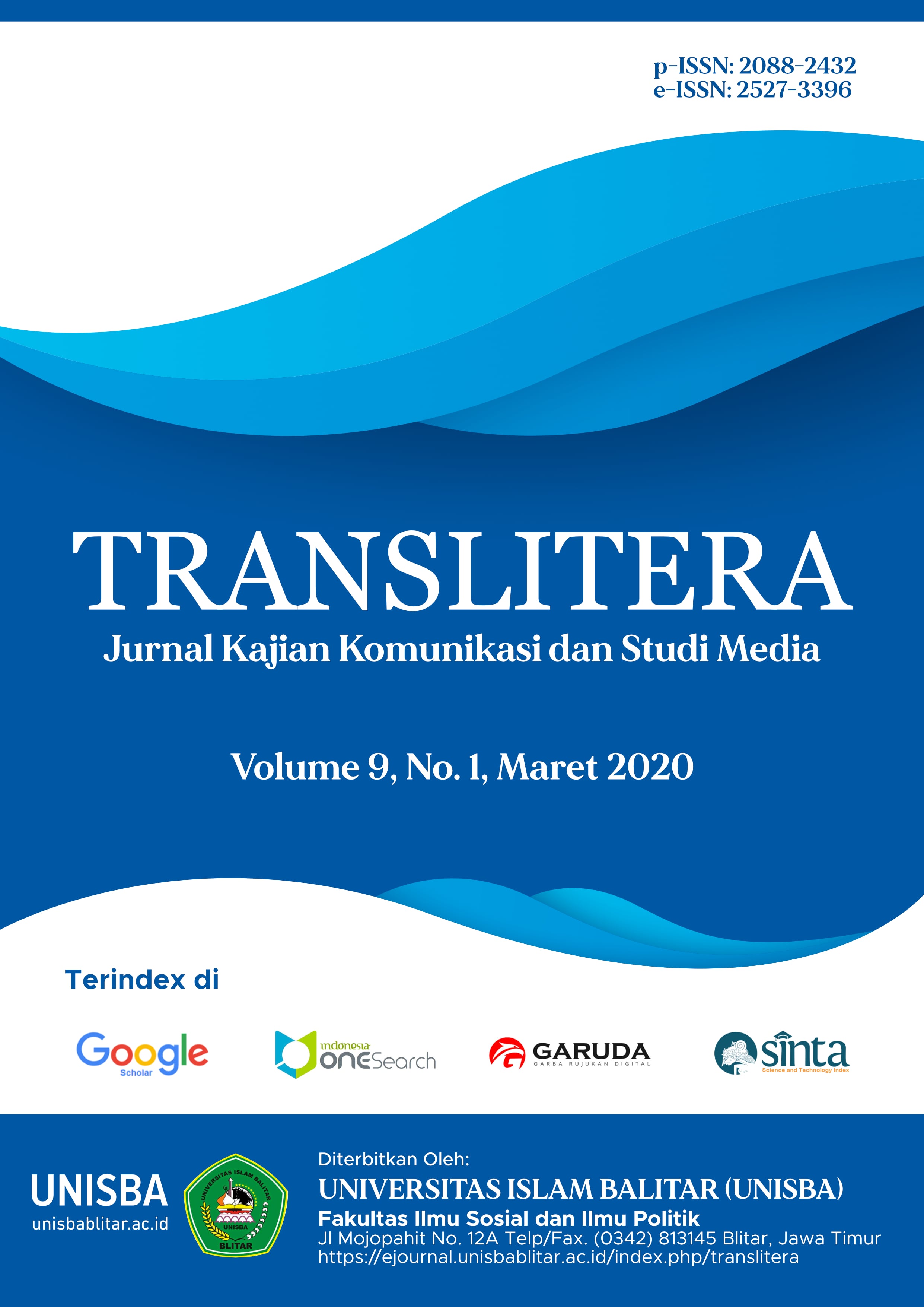STRATEGI BRAND COMMUNICATION DALAM PENGUATAN BRAND AWARENESS PARIWISATA KABUPATEN BLITAR
(Studi Pada Program OLAS KEMBAR KEMBAR)
DOI:
https://doi.org/10.35457/translitera.v9i1.943Keywords:
Strategy, Brand Communication, Brand Awareness, Toursm In Blitar DistrictAbstract
The existence of competition between products in the field of toursm is very important to increase brand communication in the program inmaintaining loyal consumers. Creating regulercustomers who are loyal and loyal to the products is what the agency or agency wants in making strategy an marketing in an effort to make customers who are certainly interested in participating in this program regularly on products or services from the company. The research uses a case study approach and this type of research is the qualitative. This research uses the Non Positivsm/ Naturalistic/ Interpretative paradigm or commonly called the qualitative paradigm. Promotiom board is a very important marketing strategy for improving the tourism sector. The brand communication strategy activities include the following: a). New Brand, b). Line Extension, c). Brand Extension. As forbrand awareness in the OLAS KEMBAR (don’t go anywhere before visiting Blitar) program by the Blitar District Regional Tourism Promotion Board. Toursm in Blitar district can be built and improved through the following methods: a). The message of the OLAS KEMBAR program delivered by a brand, is only remembered by consumers. b). The message delivered by the OLAS KEMBAR program must be different from other product brands and there must be a reletationship between brands and product categories. c). The program uses catchy song slogans and jinles, so helping consumers remember the brand, d). The program has a symbol, it should be associated with their symbol, e). The expansion of the program can be used so that the brand can be remembered by customers, f). Brand awareness in the program can be strengthened by using a gesture that fits the category, product, brand or both, g). The program makes repetition to strengthen memories because forming memories is more difficult than forming identities. By using this marketing strategy there has been increase in the number of tourist visits and an increase in the tourism sector and the economy in Blitar which is quite significant so that evaluation and monitoring of this program must continue to be carried out by the relevant agencies.
References
Alifahmi, Hifni.2008. Marketing Communications Orchestra: Harmonisasi Iklan, Promosi, dan Marketing Public Relations.Bandung: ExamediaPublishing
Belch, Michael A., & George E. Belch. 2001. Advertising and Promotion: An Integrated Marketing Communications Perspective. 5th Ed. New York: McGraw-Hill
Effendy, Onong Uchjana. 2000. Ilmu, Teori dan Filsafat Komunikasi. Bandung, PT.Citra Aditya Bakti
Kasali, Rhenald, 2000. Marketing Management.The Millennium Ed. New Jersey: Prentice- Hall
Kotler, Philip. 1992. Manajemen Pemasaran: Analisis, Perencanaan, Implementasi dan Pengendalian Edisi Keenam, Jakarta, Penerbit Erlangga
Kriyantono, Rakhmat, 2007. Teknik Praktis Riset Komunikasi, PT. Kencana Perdana, Jakarta
Prisgunanto, Ilham, 2006. Komunikasi Pemasaran Strategi dan Taktik, Bogor. Ghalia Indonesia
Robbin P Stephen, Mary Coulter, 2010. Management Jilid II., Erlanga, Jakarta
Rangkuti, Freddy, 2004.Manajemen Persediaan Aplikasi di Bidang Bisnis, PT. Raja Grafindo
Persada, Jakarta
----------------------, 2002.The Power of Brand, Gramedia Pustaka Utama, Jakarta
Stanton, William J. 2001. Prinsip Pemasaran, Jakarta, Erlangga

Downloads
Published
Issue
Section
License
Authors who publish with this journal agree to the following terms:
- Copyright on any article is retained by the author(s).
- Author grant the journal, right of first publication with the work simultaneously licensed under a Creative Commons Attribution License that allows others to share the work with an acknowledgement of the work’s authorship and initial publication in this journal.
- Authors are able to enter into separate, additional contractual arrangements for the non-exclusive distribution of the journal’s published version of the work (e.g., post it to an institutional repository or publish it in a book), with an acknowledgement of its initial publication in this journal.
- Authors are permitted and encouraged to post their work online (e.g., in institutional repositories or on their website) prior to and during the submission process, as it can lead to productive exchanges, as well as earlier and greater citation of published work.
- The article and any associated published material is distributed under the Creative Commons Attribution-ShareAlike 4.0 International License











